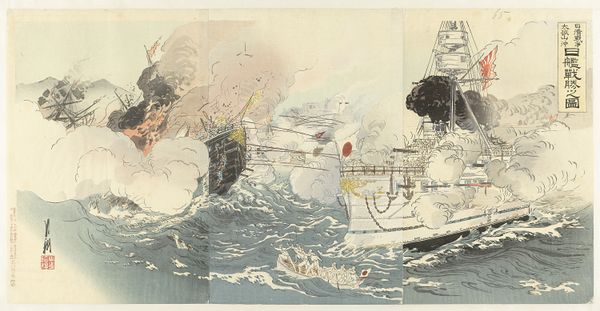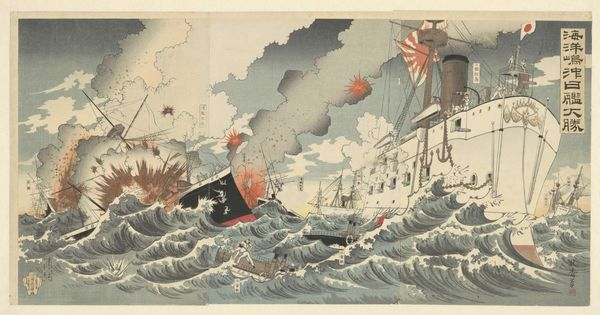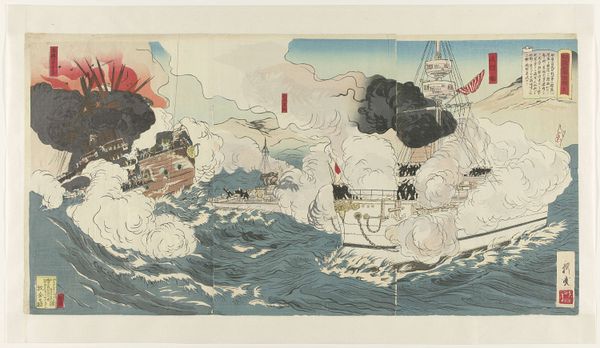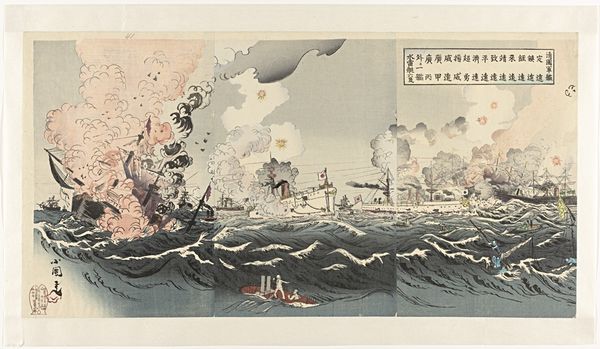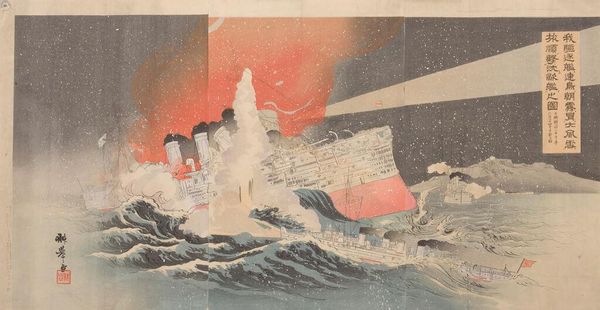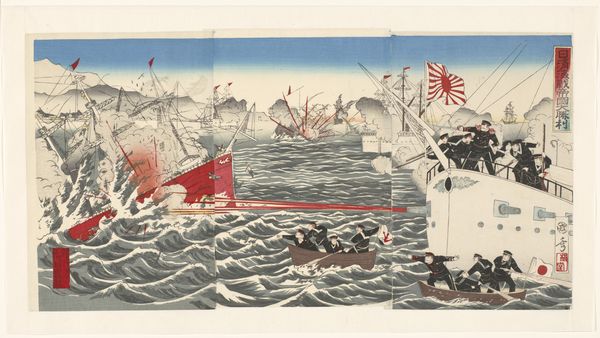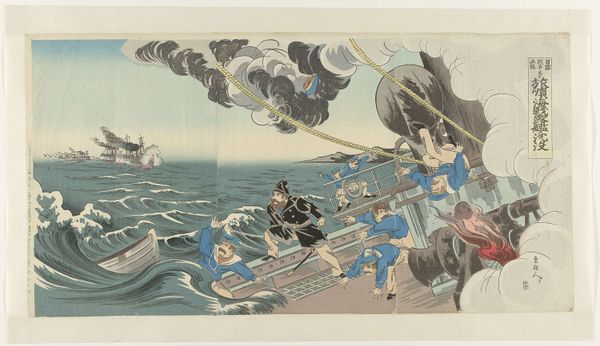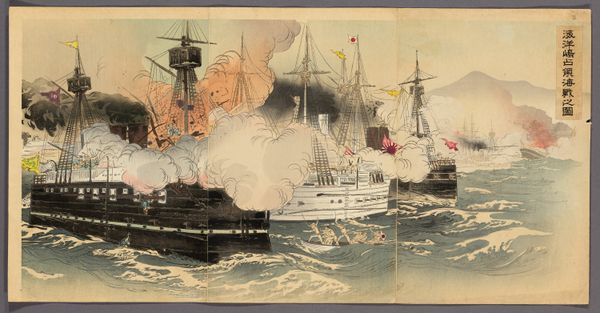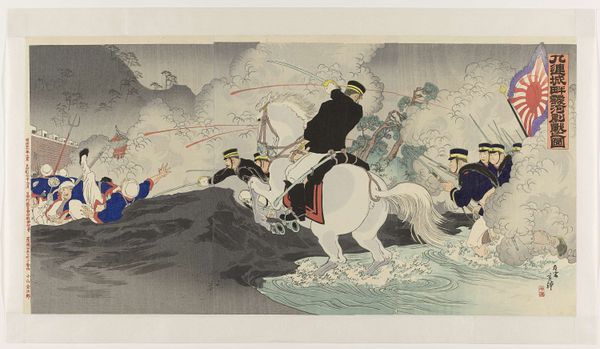
Copyright: Public domain
Curator: Immediately striking! The stark contrast between the billowing smoke and the defined waves creates a chaotic yet strangely ordered scene. Editor: You're right. That sense of organized chaos seems quite deliberate in Ogata Gekko's "Sino-Japanese War: The Japanese Navy Victorious Off Takushan," a woodblock print from 1895. It documents a pivotal moment in Japanese military expansion. Curator: It's a fascinating document, portraying Japan's modernization and imperial ambitions through the glorification of its navy. Notice how the Japanese ship is pristine, almost futuristic, while the opposing vessel appears to be engulfed in flames. This contrast highlights Japan's technological superiority and signals a power shift in East Asia. Editor: The artist definitely guides our eye through specific formal arrangements. The layering of ink and the use of negative space contribute to a dynamic composition. The curves of the waves mimic the plumes of smoke, drawing our attention upwards toward the imperial flag and creating a clear visual hierarchy that privileges Japanese forces. Curator: It's worth discussing how this print fits into the history of Japanese propaganda art. Consider its impact on public perception of the war. Prints like this would have disseminated a very specific narrative of national strength and righteous victory, influencing public opinion and bolstering support for imperial expansion. It's worth mentioning, too, that the aesthetic elegance, the “japonisme” style of the period, may have veiled the grim realities of warfare and its consequences. Editor: Yes, and formally the print participates in its construction, employing specific lines to suggest motion and action, drawing on familiar Japanese traditions and compositions. There's an undeniable beauty to the chaos, the use of layered forms and tones that elevates the narrative to something monumental and almost dreamlike. It seems to mask as it depicts. Curator: Examining works like this allows us to dissect how visual culture can be mobilized to shape collective memory. By understanding its propaganda function, we can think about how state power uses aesthetic appeal to legitimize particular actions. Editor: It underscores, yet again, the inherent capacity for beauty and design to simultaneously inspire and, if one’s not attentive, mislead.
Comments
No comments
Be the first to comment and join the conversation on the ultimate creative platform.
